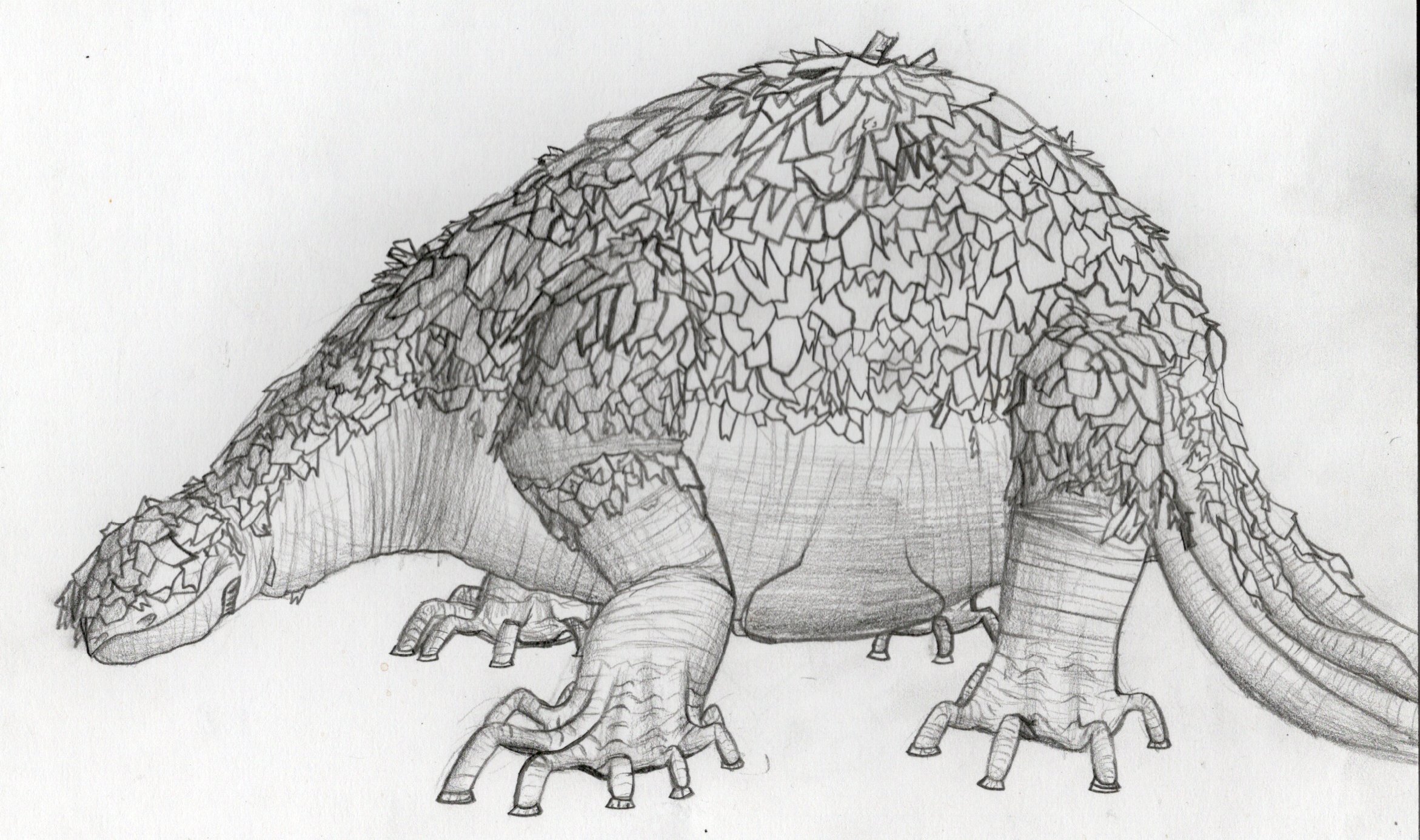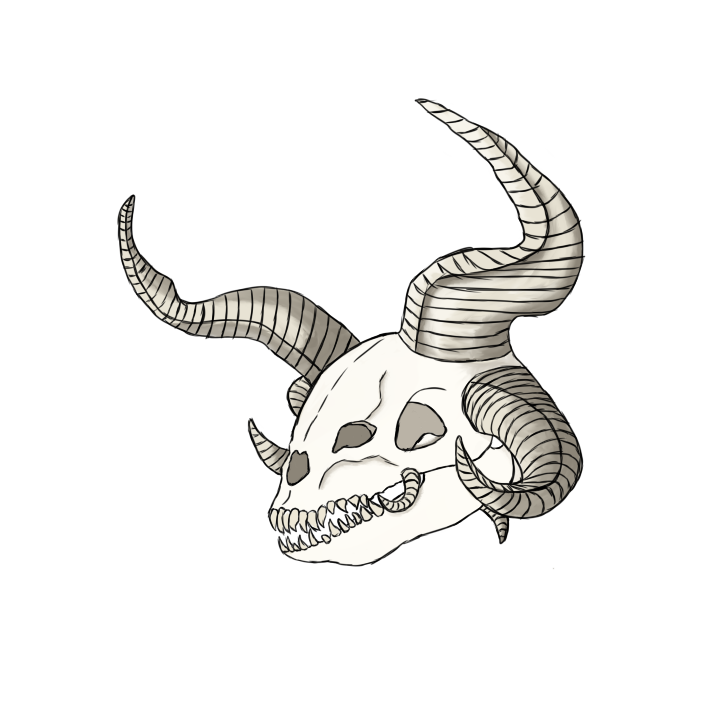Giant Komodillo
A large animal present mainly on the Kar'Tuk Aial flatlands, in Kasir'Aikair, Ak'Thakra. Reminiscent of a Komodo Dragon and an Armadillo combined, but big, hence the name.
Basic Information
Anatomy
The skeleton-analogue is largely composed of thin strands, largely similar to fish bones, wrapped around larger tubes, which function to transport oxygen around the body. These "bones" are arranged from front to back, with the same strands wrapped around the body, giving it flexibility while being durable. There are more rigid, larger bones that make up a frame where the extremities connect to as well. There are four larger limbs, with a set of vestigial flap-esque structures on bottom of the torso.
Around halfway to maturity, a giant komodillo will start to form rigid plates around it, composed of sand from the ground. This sand is ingested by the animal along with food, and is broken down and disposed of by the body onto the outer skin, where it undergoes a chemical reaction with sweat-like fluids, forming hard, rigid crystal plating along the body. These are mostly used for defense, though head plating is also used to fight other members of the species, often in territorial conflicts.
Genetics and Reproduction
Like most life on the planet, this species has no gender, and can reproduce with any other of its species. They have two sets of reproductive organs, housed within the flaps on the stomach, which can leave an egg or two for another to fertilize later, and pick up and carry them. These eggs can survive for weeks without fertilization, though will require constant warmth after.
Ecology and Habitats
The species originated in the Kar'Tuk Aial flatlands, which are a very sandy and dry environment, and they thrive in such enviroments, largely near coasts. The constant wind from the twilight band exposes deeper roots, which the species largely feeds on, taking in sand as well.
Behaviour
Highly territorial, they set up areas marked with spheres of sand and dried saliva-equivalent, which will keep a strong odor for months. Within their territory, they remain for their lives, alone, only departing rarely to deposit eggs elsewhere. Intrusions by other members of the species can result in a fight.
Additional Information
Perception and Sensory Capabilities
A giant komodillo is entirely blind, and relies on other senses similar to ours. It does however also employ a rudimentary sonar system, like many bats do.
Symbiotic and Parasitic organisms
A suprisingly common mutation among the species, presumably impacted by the constant solar radiation of the tidally locked planet, is one where the crystal plates, which normally shed after a few years from forming, where the plates don't fall off, instead continuing to grow and cover the animal. Though this affects the animal's mobility, it also provides additional defense and has a unique side effect.
The plates staying for decades at a time, and the way they layer on top of each other, allow for a veritable ecosystem of microscopic life to form. The robust nature of a giant komodillo ensures that rare few of these micro-organisms are actually harmful to the animal. Still, there is one particular type of creature that is very beneficial. As a culture of these essentially-bacteria develop, they will eventually enter the animal's bloodstream-equivalent. When they spread, they form a symbiotic relationship of sorts with the animal, taking over major production centers for cells, and injecting some of their own DNA into them. This creates a very peculiar effect that allows the cells to remain for longer, and from there be repaired and replaced much more efficiently, radically extending the creature's life. The longest-lived specimen thus far to be recorded lived to the age of 178.
As the species' members generally lose their fertility in their 40s, these long-lived members are generally not capable of reproduction. This being the case, they are rarely regarded as territorial threats, and indeed do not establish territories of their own, instead preferring to roam around their habitat. Being considered non-threats, they actually interact with other members of the species on friendly terms, sometimes exchanging information about good places to eat, with the rudimentary communication methods they have.
While the discovery of life-extension methods like this would have been impactful a long time in the past ago, the development of an actual cure for aging some half a millenium ago from this species' discovery rendered that a moot point. It is nevertheless a fascinating phenomenon, and a subset of research has sprung up within the planet's already impressive xenobiology-focused field of study.
Origin/Ancestry
Ak'Thakra, specifically the Kar'Tuk Aial flatlands.
Average Height
2 meters
Average Weight
8000 kilograms
Average Length
5 meters
Geographic Distribution




CHONK. The symbiotic relationship is pretty interesting.